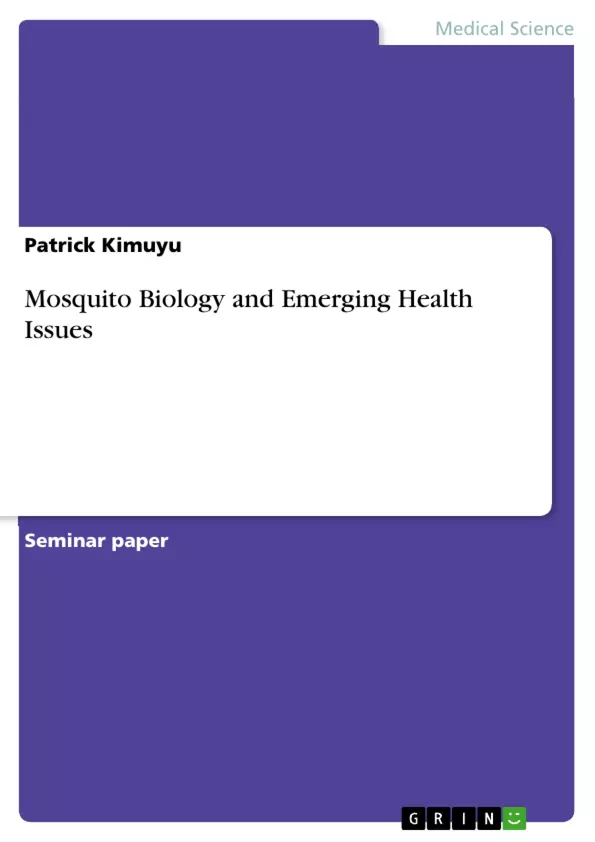Mosquitoes remain to be among the most amazing organisms in the universe. Evolutionary data reveals that mosquitoes have survived for more than 30 million years in which 3,500 species have evolved. Despite the large genetic diversity observed in mosquitoes, only a few species have been found to bother humans. Over the years, research on mosquitoes has enabled entomologists in identifying different mosquito taxonomic classes. However, the classification of mosquitoes has been surrounded by unprecedented controversy because new species are being discovered year-by-year. The latest mosquito species to be identified include the two mosquito species belonging to the Topomyia genus recently discovered in Sri Lanka and the invasive Aedes japonicas species discovered in Asia (Kampen & Werner 2014).
According to the taxonomic classification, mosquitoes belong to the largest animal phylum; Arthropoda, and they are grouped in the Class: Insecta that comprises of other insects such as the flies. Down in the taxonomic classification, mosquitoes belong to the Order: Diptera and Family: Culicidae that comprise of various sub-families. At present, there are 43 known mosquito genera, which comprise of over 3,500 species (Rueda 2008). In addition, an extensive study has been conducted to generate a comprehensive understanding on the anatomy, physiology and ecological characteristics of mosquitoes. It is believed that the ecological characteristics of mosquitoes and physiology are responsible for the emerging health issues. Therefore, this research paper will give a comprehensive overview of the mosquito biology. It will discuss the anatomy, physiology and ecological characteristics of mosquitoes. It will also provide a concise overview on the mosquito-borne diseases.
Table of Contents
- Introduction
- Mosquito Anatomy
- Abdomen
- Thorax
- Head
- Physiology in Mosquitoes
- Ecological Role of Mosquitoes
- Distribution of Mosquitoes
- Mosquito Life Cycle
- Mosquitoes as Vectors
- Mosquito-borne Diseases
- Malaria
- Dengue Fever
- Yellow Fever
- Zika Virus
- West Nile Virus
- Control Measures and Public Health Perspectives
- Chemical Control
- Biological Control
- Environmental Management
- Personal Protection
- Public Health Education
- Conclusion
Objectives and Key Themes
This research paper aims to provide a comprehensive overview of mosquito biology, focusing on their anatomy, physiology, and ecological characteristics. It also delves into the significance of mosquitoes as vectors for various diseases, emphasizing the health implications of these insects.
- The anatomical features of mosquitoes, particularly those related to their feeding habits.
- The physiological processes involved in mosquito development, digestion, and respiration.
- The ecological distribution of mosquitoes and their role as vectors for diseases.
- The various mosquito-borne diseases and their impact on public health.
- Control measures and public health perspectives for mitigating mosquito-borne diseases.
Chapter Summaries
The introduction sets the stage by discussing the importance of mosquitoes in the animal kingdom and highlights their role as vectors for various diseases. It emphasizes the need for comprehensive understanding of mosquito biology to address emerging health issues.
The chapter on mosquito anatomy provides a detailed description of the three principal body parts: the head, thorax, and abdomen. It explores the sensory apparatus found on the head, such as the eyes, antennae, and mouth parts, and their role in detecting food sources and navigating the environment.
The chapter on physiology in mosquitoes delves into the distinct stages of their life cycle and the characteristics of digestion and gaseous exchange in these insects. It also touches upon the endocrine system and its role in regulating mosquito behavior.
The chapter on ecological role of mosquitoes explores their widespread distribution, focusing on the factors that influence their abundance in different regions. It discusses the mosquito life cycle, including the egg, larva, pupa, and adult stages, and the importance of aquatic environments for their reproduction.
The chapter on mosquito-borne diseases covers a range of diseases transmitted by mosquitoes, including malaria, dengue fever, yellow fever, Zika virus, and West Nile virus. It discusses the impact of these diseases on human health and the challenges posed by their spread.
Keywords
Mosquito biology, anatomy, physiology, ecology, vector, disease transmission, malaria, dengue fever, yellow fever, Zika virus, West Nile virus, control measures, public health, environmental management.
- Citation du texte
- Patrick Kimuyu (Auteur), 2018, Mosquito Biology and Emerging Health Issues, Munich, GRIN Verlag, https://www.grin.com/document/388323



